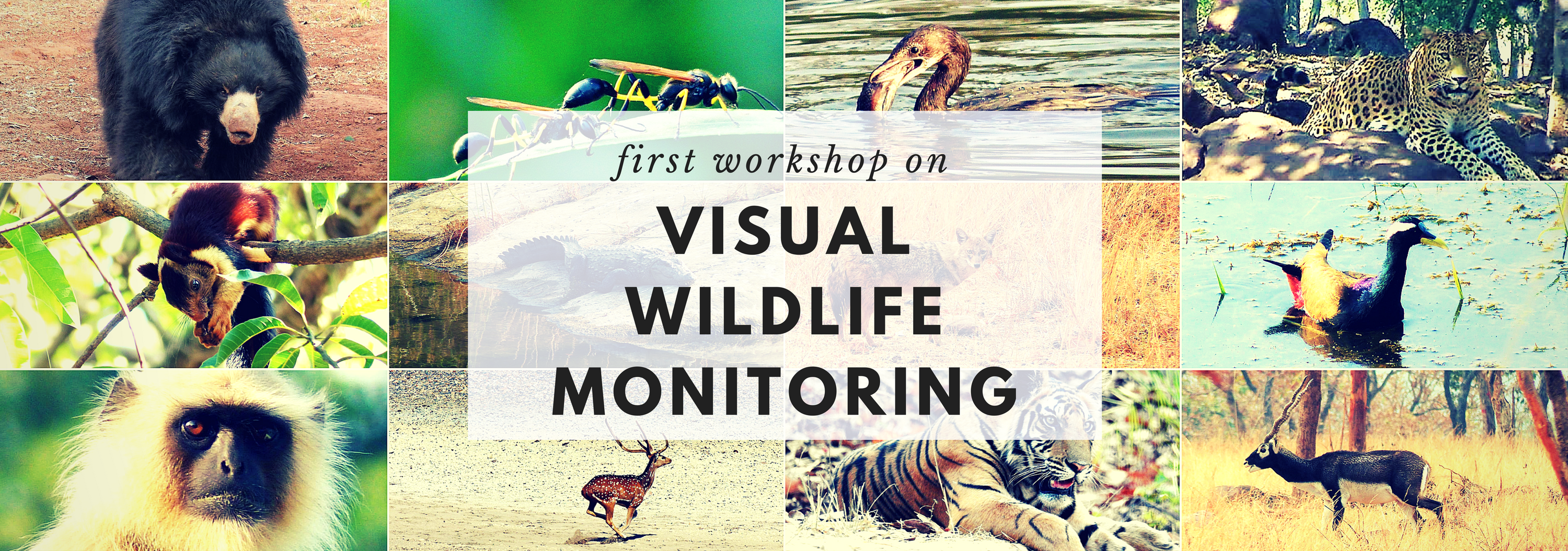Program
| Time | Talk/Title | Speaker/Author(s) |
| 08:00-8:30 | Welcome Session | Organizers |
| 08:30-8:50 | Towards Automated Recognition of Facial Expressions in Animal Models | Blumrosen, Hawellek and Pesaran |
| 08:50-9:10 | Towards Automated Visual Monitoring of Individual Gorillas in the Wild | Brust et al. |
| 09:10-9:30 | Integral Curvature Representation and Matching Algorithms for Identification of Dolphins and Whales | Weideman et al. |
| 09:30-9:50 | Visual Tracking of Small Animals in Cluttered Natural Environments Using a Freely Moving Camera | Risse et al. |
| Break | ||
| 10:20-10:40 | Visual Localisation and Individual Identification of Holstein Friesian Cattle via Deep Learning | Andrew, Greatwood and Burghardt |
| 10:40-11:00 | Towards Automatic Wild Animal Detection in Low Quality Camera-trap Images Using Two-channeled Perceiving Residual Pyramid Networks | Zhu, Li and Li |
| 11:00-11:20 | Poster Spotlights | |
| Deep Census: AUV-Based Scallop Population Monitoring | Rasmussen et al. | |
| Coral-Segmentation: Training Dense Labeling Models with Sparse Ground Truth | Alonso et al. | |
| A Computer Vision Framework for Detecting and Preventing Human-Elephant Collisions | Shukla et al. | |
| Active Learning for the Classification of Species in Underwater Images From a Fixed Observatory | Möller, Nilssen and Nattkemper | |
| 11:20-12:05 | Panel Discussion | |
| 12:05-12:10 | Closing Remarks | Organizers |
| 12:10-13:10 | Poster Session | |
Presenter Instructions
OralsThe oral presentations will have a 20 minute slot each. The presenters are requested to prepare a 15 minute presentation, leaving 5 minutes for Q&A and switching speakers. The presenter instructions are the same as those of the main ICCV conference (Please see instructions under "Oral presentations (workshops and tutorials)").
Spotlight Posters
Each poster will be provided a 5 minute slot for a short spotlight presentation. Akin to the spotlight sessions in the main ICCV conference, the presenters are requested to create a video of their slides of a duration no longer than 3 min. 30 seconds. The presenter instructions are the same as those of the main ICCV conference (Please see instructions under "Spotlight presentations").
Poster Sessions
Poster stands will be provided for all accepted papers (both oral & posters). The presenter instructions are the same as those of the main ICCV conference (Please see instructions under "Poster sessions (workshops)").
Accepted Papers
- Towards Automated Recognition of Facial Expressions in Animal Models.
by Gaddi Blumrosen (Computational Biology Center (CBC), IBM), David Hawellek and Bijan Pesaran (Center of Neural Science, NYU) - Towards Automated Visual Monitoring of Individual Gorillas in the Wild
by Clemens-Alexander Brust (Friedrich Schiller University Jena, Germany), Tilo Burghardt (University of Bristol, United Kingdom), Milou Groenenberg (Conservation Society, Global Conservation Program, USA), Christoph Käding (Michael Stifel Center Jena, Germany), Hjalmar S. Kühl (Max Planck Institute for Evolutionary Anthropology, Germany), Marie L. Manguette (Max Planck Institute for Evolutionary Anthropology, Germany) and Joachim Denzler (Friedrich Schiller University Jena, Germany) - Integral Curvature Representation and Matching Algorithms for Identification of Dolphins and Whales
by Hendrik J. Weideman, Zachary M. Jablons (Rensselaer Polytechnic Institute), Jason Holmberg (WildMe), Kiirsten Flynn, John Calambokidis (Cascadia Research Collective), Reny B. Tyson, Jason B. Allen, Randall S. Wells (Chicago Zoological Society’s Sarasota Dolphin Research Program, Mote Marine Laboratory), Krista Hupman (Massey University), Kim Urian (Duke University Marine Laboratory) and Charles V. Stewart (Rensselaer Polytechnic Institute) - Visual Tracking of Small Animals in Cluttered Natural Environments Using a Freely Moving Camera
by Benjamin Risse (School of Informatics, University of Edinburgh, UK), Michael Mangan (Lincoln Centre for Autonomous Systems, University of Lincoln, UK), Luca Del Pero and Barbara Webb (School of Informatics, University of Edinburgh, UK) - Visual Localisation and Individual Identification of Holstein Friesian Cattle via Deep Learning
by William Andrew, Colin Greatwood and Tilo Burghardt (Dept. of Computer Science, University of Bristol, United Kingdom) - Towards AutomaticWild Animal Detection in Low Quality Camera-trap Images Using Two-channeled Perceiving Residual Pyramid Networks
by Chunbiao Zhu (SECE, Shenzhen Graduate School, Peking University, China), Thomas H. Li (Gpower Semiconductor Inc, Suzhou, China) and Ge Li (SECE, Shenzhen Graduate School, Peking University, China) - A computer vision framework for detecting and preventing Human-Elephant Collisions
by Pushkar Shukla (University of California , Santa Barbara), Isha Dua (International Institute of Technology, Hyderabad), Balasubramanian Raman (Indian Institute of Technology, Roorkee) and Ankush Mittal (Graphic Era University, Dehradun) - Coral-Segmentation: Training Dense Labeling Models with Sparse Ground Truth
by Iñigo Alonso, Ana Cambra, Adolfo Muñoz (DIIS-i3A. Universidad de Zaragoza, Spain), Tali Treibitz (Charney School of Marine Sciences. University of Haifa, Israel) and Ana C. Murillo (DIIS-i3A. Universidad de Zaragoza, Spain) - Active learning for the classification of species in underwater images from a fixed observatory
by Torben Möller (Biodata Mining Group, Bielefeld University, Germany), Ingunn Nilssen (Statoil ASA, Research and Technology, Norway) and Tim W. Nattkemper (Biodata Mining Group, Bielefeld University, Germany) - Deep Census: AUV-Based Scallop Population Monitoring
by Christopher Rasmussen, Jiayi Zhao, Danielle Ferraroy, and Arthur Trembanis (University of Delaware, USA)
